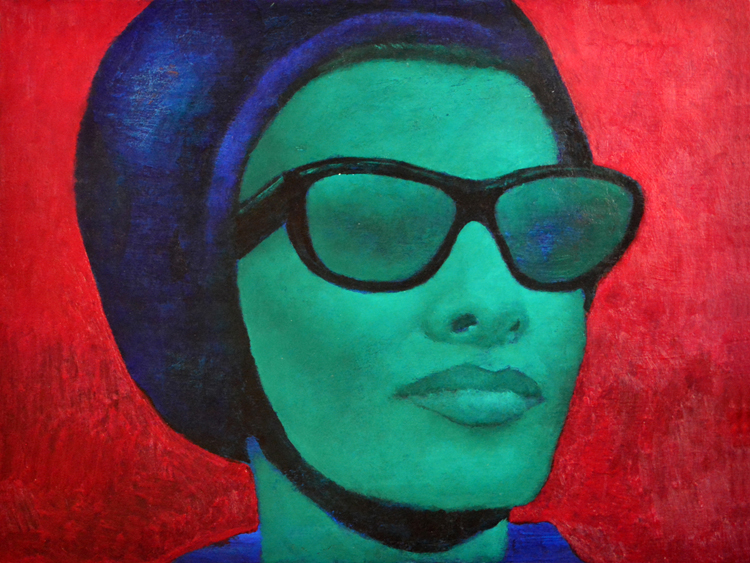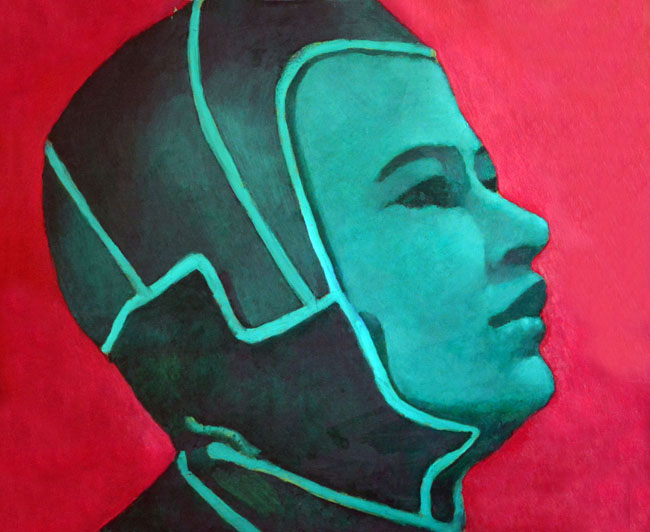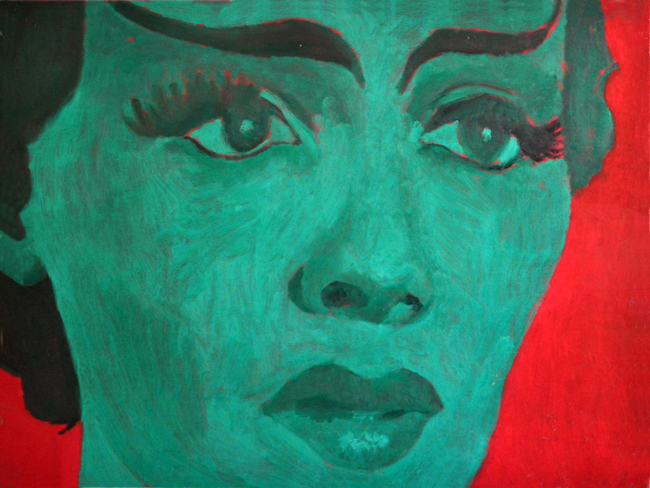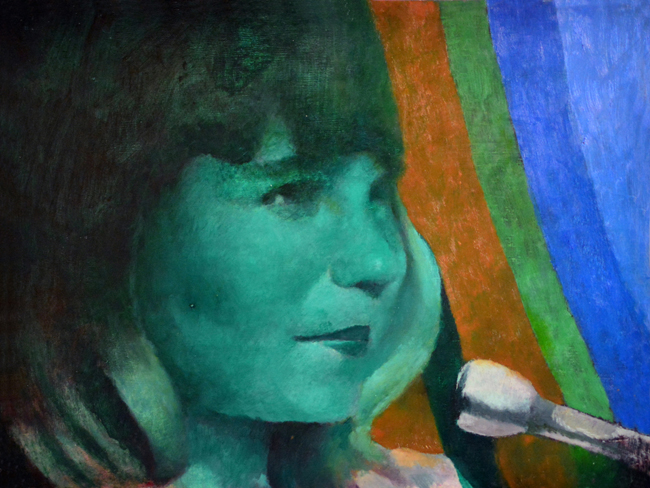Ghosts of Cathode Childhoods
patrick brennan
September 2019
 Sophia
Sophia
Fedele Spadafora’s new show at Figureworks in Williamsburg explores one of the many masks that painting might assume. They greet perception from an angle that challenges a viewer to take some time to assemble a framework within which to fully engage them as paintings. At first sight, one encounters a series of individual heads, each close-cropped as if they belong to the big movie screen, but these paintings are way small, closer in scale to laptops or 20th century television sets. Nearly each visage is of women similar to those usually apprehended to front television or billboard ads. They are painted flat, photographically literal, schematic.
 Evi
Evi
It occurs that these aren’t so much images of people per se as images of images, and, as such, an association might be drawn not only with the glib patina of advertising, but with the sort of loyally unquestioning superficiality so famously sported by Andy Warhol. Beyond this passing resemblance they then diverge. Spadafora’s paintings aren’t in any way glorifying the glamorous impunity affected by the overly well insulated rich & famous. Most of his chosen color scheme recalls nearly funereal christmastime, adorned neither with cheery berry reds or exuberantly coniferous greens, but with tinted greenish faces hinting most at blue deoxygenation engulfed in painful alizarin. These faces aren’t exactly having fun, variously tense or troubled or otherwise somehow out of balance. None defiantly stare back at the viewer with the self-consciously unapologetic assurance of Manet’s Olympia. They’re elsewhere, looking elsewhere, somewhere else.
The faces may wax eerie, neither exactly alive nor not really alive, able replicants perhaps, but not actually agents. Who are they? Or are they whos at all? In some ways, the paintings might feel facile, but they’re not that unconsidered or unfelt, suspended like the personae they depict, ruminatively, even deliberately, not complete. All of which leads to questions. Why paint these images? Why paint them this way?
 The Devil Girl
The Devil Girl
During conversation with Fedele in his studio, I was able to to learn that these paintings are actors in a weave of personal stories & identity generating recollections rooted in a non-English-speaking immigrant household during the ‘70s, where television manufactured and projected examples of what it’s supposed to be to be American, absolutely no compartmentalizations posed, absent any distinctions between science fiction, sitcom, news flash or cartoon, no verification, only a hovering vicarious.
These formative images have never abandoned Fedele’s awareness as they continue to haunt the foundations of his own self creation — and he’s far from alone with such experience. Hence, these are meditations on, and interrogations into, this peculiar irreal imagescape that has pursued so many children of the techniculture.
The tone of the paintings, then, makes sense, their affected impoverishment of surface, the dire effect of their color, Spadafora’s sidestepping the sort of carefully modulated, Morandiesque, subtle color relations he’s excelled at in much of his other work. These painted images of images were never really, really ever real, really. But try explaining that to the imagination of any 6 year old being mothered by cathode or LED projections.
And nevertheless, regardless of their fictitiousness, one can’t help feeling for these prisoners, almost all women, trapped inside these boxes they can’t get out of. That’s some seriously unfinished business that’s anything but fabrication. Fedele Spadafora’s paintings here are difficult in their contradictions and courageous in what he’s been willing to confront.
 Anthem
Anthem
FEDELE SPADAFORA
Stars & Stripes
Figureworks
168 North 6th Street
Williamsburg, Brooklyn
◊
patrick brennan coordinates ensembles, composes & plays the alto saxophone, pursuing a contrarian and independent musical path toward evolving a distinct musical language that explores multidirectional thinking, organization, time, sound, line & rhythm. Recordings include terraphonia(Creative Sources), muhheankuntuk (Clean Feed), .which way what, and Sudani (deep dish).
